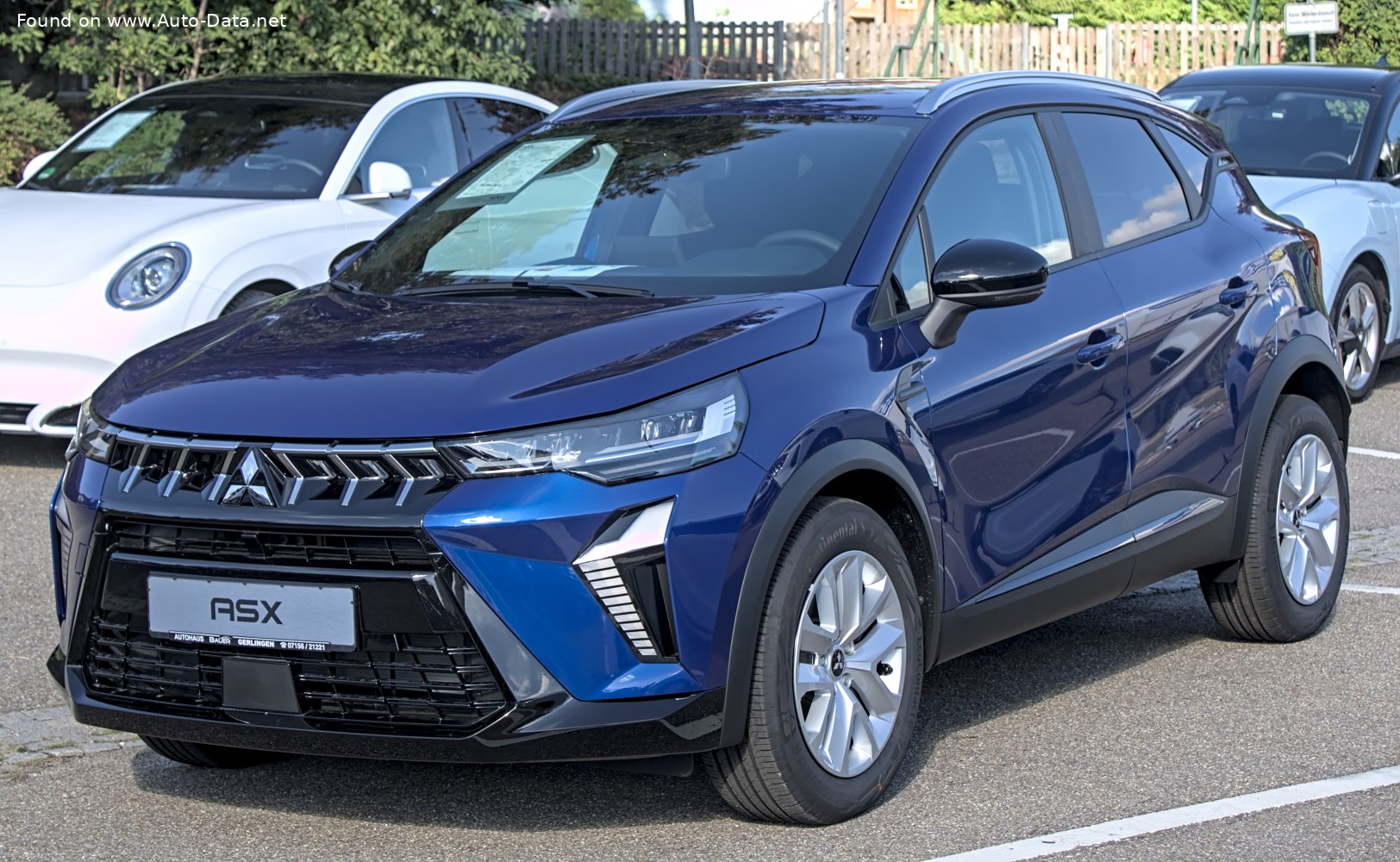Everything you need to know about specifications and performance - Mitsubishi ASX 2024 - 1.0 Turbo (91 Hp)

Overview:
What is the engine capacity of a Mitsubishi ASX 2024?
The engine capacity of the Mitsubishi ASX 2024 is 999 cm.
Mitsubishi ASX 2024 How many horsepower?
The engine power of the Mitsubishi ASX 2024 is Internal Combustion engine.
What is the Mitsubishi ASX 2024 engine?
Mitsubishi ASX 2024 engine is H4D 470. (Click to see other cars using the same engine)
General:
Brand: Mitsubishi
Model: ASX
Generation: ASX II (facelift 2024)
Modification (Engine): 1.0 Turbo (91 Hp)
Start of production: June, 2024
End of production:
Powertrain Architecture: Internal Combustion Engine
Body type: SUV, Crossover
Seats: 5
Doors: 5
Engine:
Engine systems: Start & Stop System
Power: Internal Combustion Engine
Power per litre: 91.1 hp/l
Torque: 160 nm @ 2000-3750 rpm.
Engine Model/Code:H4D 470
Engine displacement: 999 cm
Number of cylinders: 3
Engine configuration: Inline
Number of valves per cylinder: 4
Fuel injection system: Multi-port manifold injection
Engine aspiration: Turbocharger, Intercooler
Valvetrain: DOHC
Engine oil capacity: 4.2 l
Coolant: 6.4 l
Engine layout: Front, Transverse
Cylinder Bore: 72.2 mm
Piston Stroke: 81.34 mm
Compression ratio: 9.5:1
Performance:
Fuel Type: Petrol (Gasoline)
Combined fuel consumption (WLTP): 6.0 l/100 km
Fuel consumption at Low speed (WLTP): 6.9-7.0 l/100 km
Fuel consumption at Medium speed (WLTP): 5.5 l/100 km
Fuel consumption at high speed (WLTP): 5.1 l/100 km
Fuel consumption at very high speed (WLTP): 6.6 l/100 km
Emission standard: Euro 6d
Acceleration 0 - 100 km/h: 14 sec
Acceleration 0 - 62 mph: 14 sec
Maximum speed: 168 km/h
Weight-to-power ratio: 13.4 kg/Hp, 74.5 Hp/tonne
Weight-to-torque ratio: 7.6 kg/Nm, 131 Nm/tonne
Acceleration 0 - 60 mph: 13.3 sec
Space:
Kerb Weight: 1221-1226 kg
Max. weight: 1730 kg
Max. roof load: 80 kg
Max load: 504-509 kg
Trunk (boot) space - maximum: 1596 l
Trunk (boot) space - minimum: 484 l
Permitted trailer load with brakes (12%): 1200 kg
Fuel tank capacity: 48 l
Permitted trailer load without brakes: 645 kg
Permitted towbar download: 75 kg
dimensions:
Length: 4239 mm
Width: 1797 mm
Height: 1584 mm
wheelbase: 2639 mm
Width including mirrors: 2003 mm
Front track: 1562 mm
Rear (Back) track: 1547 mm
Front overhang: 883 mm
Rear overhang: 717 mm
Ride height (ground clearance): 169 mm
Minimum turning circle (turning diameter): 11.1 m
Powertrain, Suspension and Brakes:
Drivetrain Architecture: The Internal combustion Engine (ICE) drives the front wheels of the vehicle.
Drive wheel: Front wheel drive
Number of gears and type of gearbox: 6 gears, manual transmission
Front brakes: Ventilated discs
Rear brakes: Drum
Assisting systems: ABS (Anti-lock braking system)
Steering type: Steering rack and pinion
Power steering: Electric Steering
Tires size: 215/60 R17
Wheel rims size: 7J x 17
Front suspension: Independent type McPherson
Rear suspension: Torsion
See also

Other generation.
Its production began in 2019 until 2023

Same engine. (H4D 470).
Its production began in 2022 until Now

Same engine. (H4D 470).
Its production began in 2020 until 2022

Same production year and almost the same engine capacity.
Its production began in 2024 until Now

Same production year and almost the same engine capacity.
Its production began in 2024 until Now
Write a comment